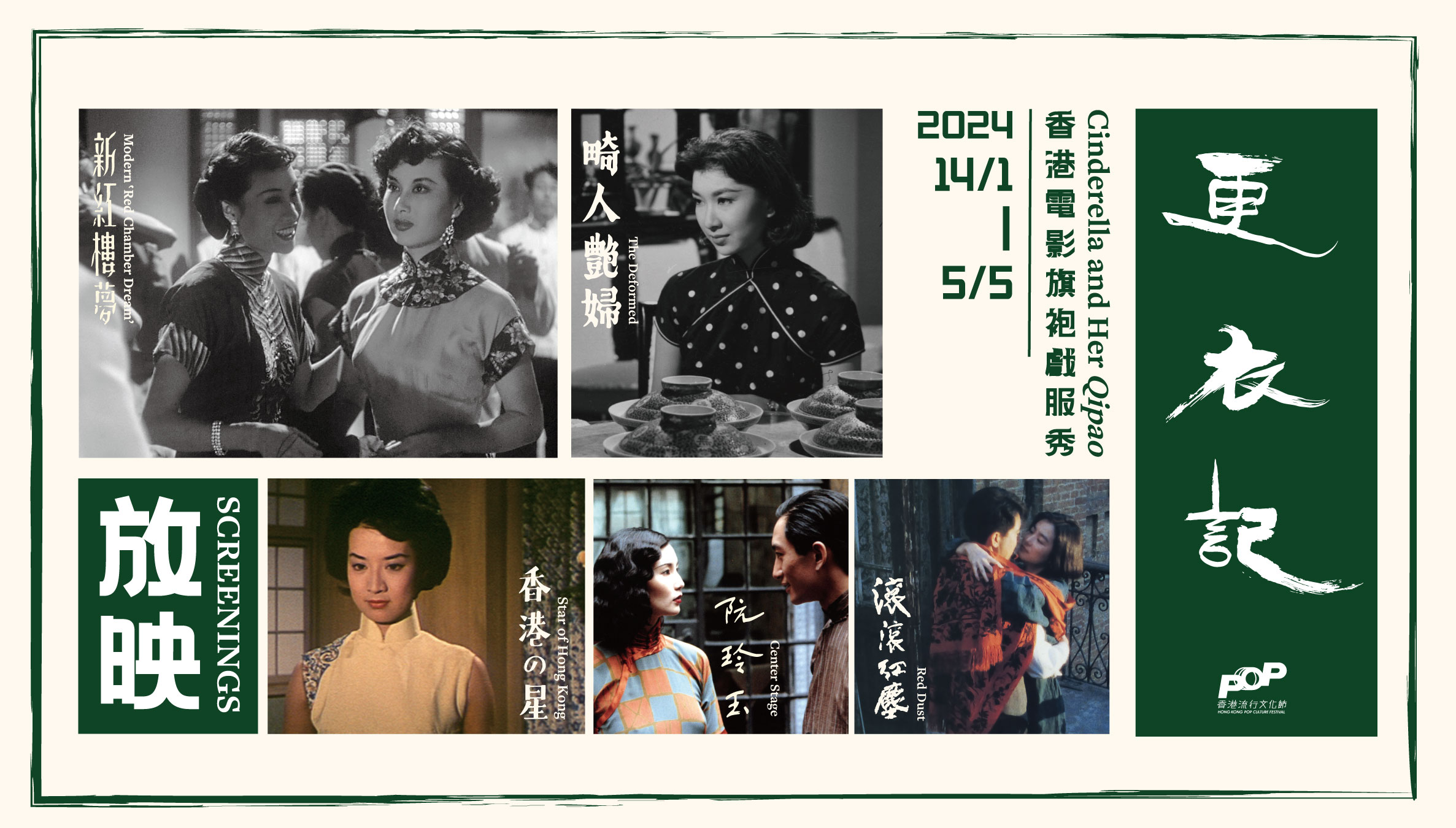
Cinderella and Her Qipao
‘Clothes are a language, a carry-on pocket drama.’
— Eileen Chang
Costumes are a crucial element of cinema. They can help drive the narrative of a story; they can set the historical background of a film; they can project the innermost feelings and thoughts of a character. Trendy outfits paraded by fashion models on the runway are made chiefly for show and display but costumes are designed specially to recreate the atmosphere of a specific time period to establish a character’s persona, social status and personality, thereby impressing upon the audience the mood of a film. A simple change of costume can also signify a character’s change of emotion or state of mind. Qipaos, an iconic Chinese fashion staple, are often custom-made for actresses to highlight the individuality of their characters. Regardless of the styles and cuts, an actress in qipao always exudes timeless beauty on the silver screen.
The qipao (more familiarly called cheongsam) making technique was inscribed onto the National List of Intangible Cultural Heritage of China in 2021. Once an outfit of daily wear for women, qipaos are frequently seen in Hong Kong cinema, particularly in contemporary films from the 1950 and 60s which can almost be described as moving ‘fashion magazines’ filled with images of actresses in fitted on-trend qipaos that accentuate their curves. From the cut, pattern and texture down to the adornments, every detail of their qipaos was chosen specifically to objectify the internal and external traits of the characters they played. Although qipaos gradually gave way to Western dresses in the 1970s, they continue to be featured in retro-themed films as a cultural symbol representing beauty and history.
As a complement to the ‘Cinderella and Her Qipao’ exhibition curated by the Hong Kong Film Archive, one Hong Kong film whose qipao costume is being showcased will be screened every month from January to May next year to offer snapshots of the exhibit within the context of the film. Among the films to be screened are three contemporary films made in the 1950s and 60s during the heyday of qipaos. Li Lihua, Ouyang Shafei and Luo Lan from Modern ‘Red Chamber Dream’ (1952), Betty Loh Ti from The Deformed (1960), and Lucilla You Min from Star of Hong Kong (Japan: 1962; Hong Kong: 1963) all appear on the screen in the daily wear of the time but each and every one of their qipaos was designed differently to underscore the social status and personality of their characters. The selected films were produced respectively by three major companies of Hong Kong Mandarin cinema, namely Great Wall, Shaw Brothers and MP & GI, and the condition of the qipaos on exhibit is a testament to the capability of the big studios to better preserve their costumes. Qipaos also function as a cultural symbol in films set in the Republican period up to the 1950s and 60s. During the 1980s and 90s, Hong Kong filmmakers began producing retro-themed films like Red Dust (1990) and Center Stage (1992), offering glimpses of China from bygone days. Whether they are gloomy-coloured, loose-fitting outer robe worn in war-time northeast China or high-necked, figure-hugging qipaos in geometric patterns worn by fashionable women in 1930s Shanghai, it is not an overstatement to say that these qipao costumes speak louder than words, opening a portal to another time and space.
As a complement to the ‘Cinderella and Her Qipao’ exhibition curated by the Hong Kong Film Archive, one Hong Kong film whose qipao costume is being showcased will be screened every month from January to May next year to offer snapshots of the exhibit within the context of the film. Among the films to be screened are three contemporary films made in the 1950s and 60s during the heyday of qipaos. Li Lihua, Ouyang Shafei and Luo Lan from Modern ‘Red Chamber Dream’ (1952), Betty Loh Ti from The Deformed (1960), and Lucilla You Min from Star of Hong Kong (Japan: 1962; Hong Kong: 1963) all appear on the screen in the daily wear of the time but each and every one of their qipaos was designed differently to underscore the social status and personality of their characters. The selected films were produced respectively by three major companies of Hong Kong Mandarin cinema, namely Great Wall, Shaw Brothers and MP & GI, and the condition of the qipaos on exhibit is a testament to the capability of the big studios to better preserve their costumes. Qipaos also function as a cultural symbol in films set in the Republican period up to the 1950s and 60s. During the 1980s and 90s, Hong Kong filmmakers began producing retro-themed films like Red Dust (1990) and Center Stage (1992), offering glimpses of China from bygone days. Whether they are gloomy-coloured, loose-fitting outer robe worn in war-time northeast China or high-necked, figure-hugging qipaos in geometric patterns worn by fashionable women in 1930s Shanghai, it is not an overstatement to say that these qipao costumes speak louder than words, opening a portal to another time and space.
The contents of the programme do not represent the views of the presenter. The presenter reserves the right to change the programme should unavoidable circumstances make it necessary.

